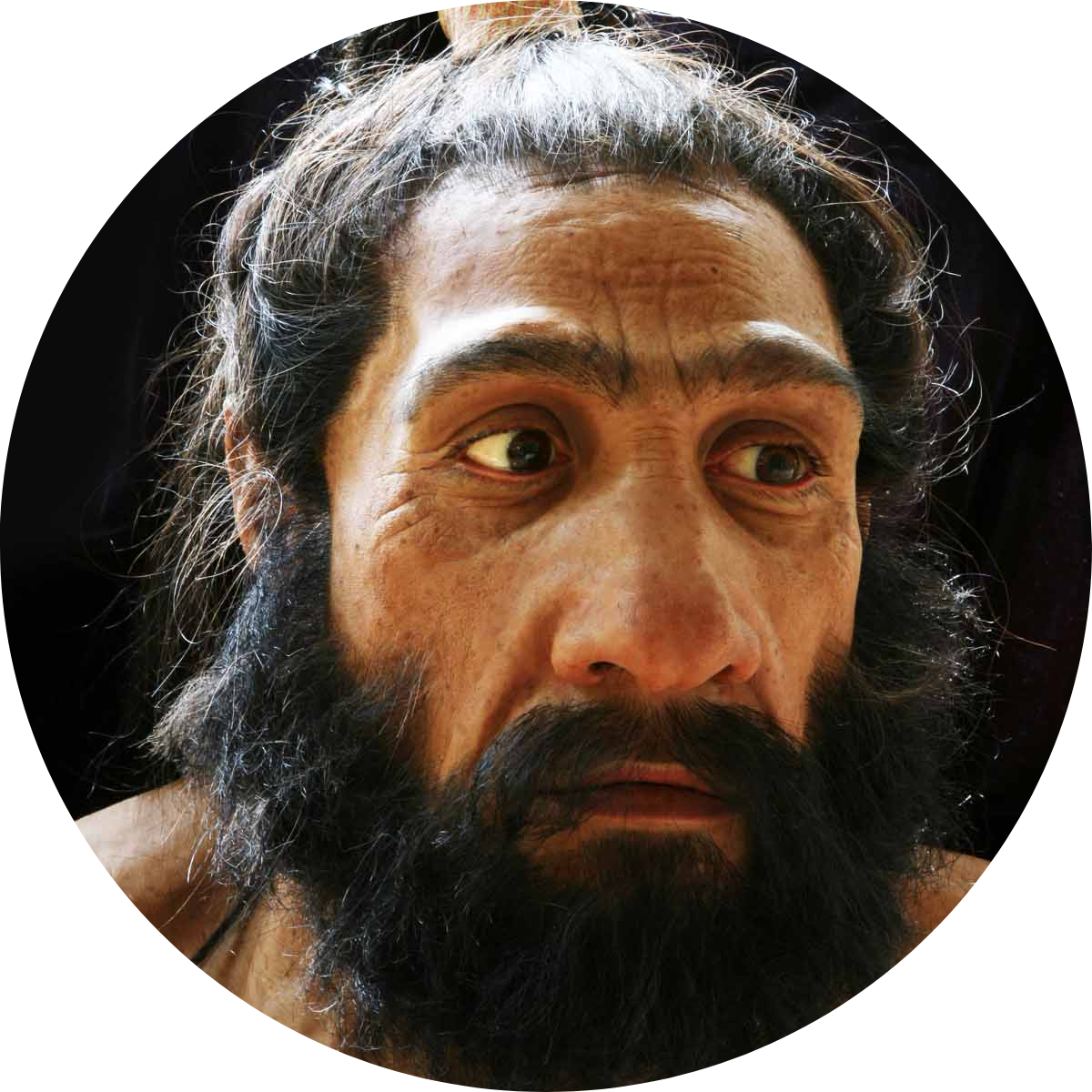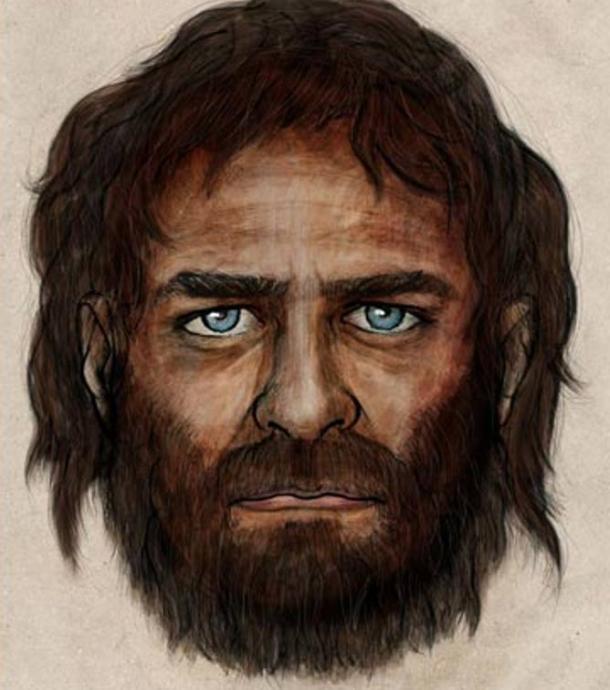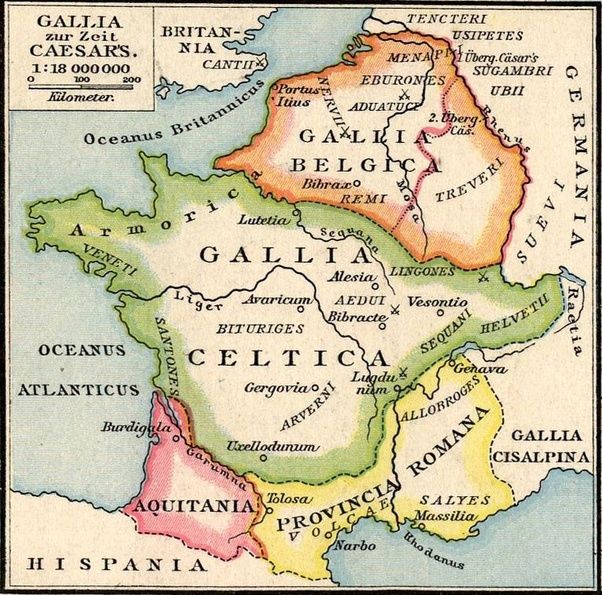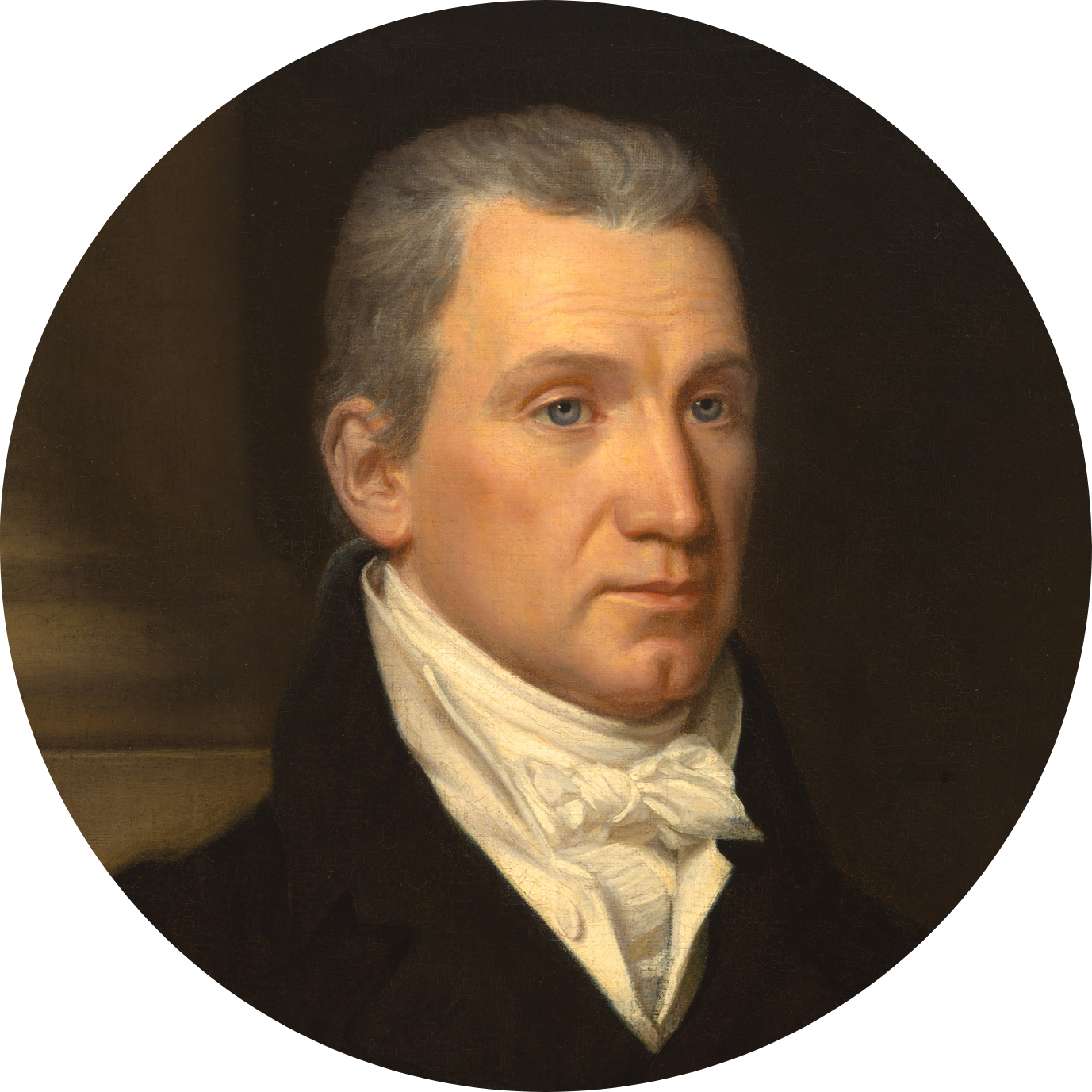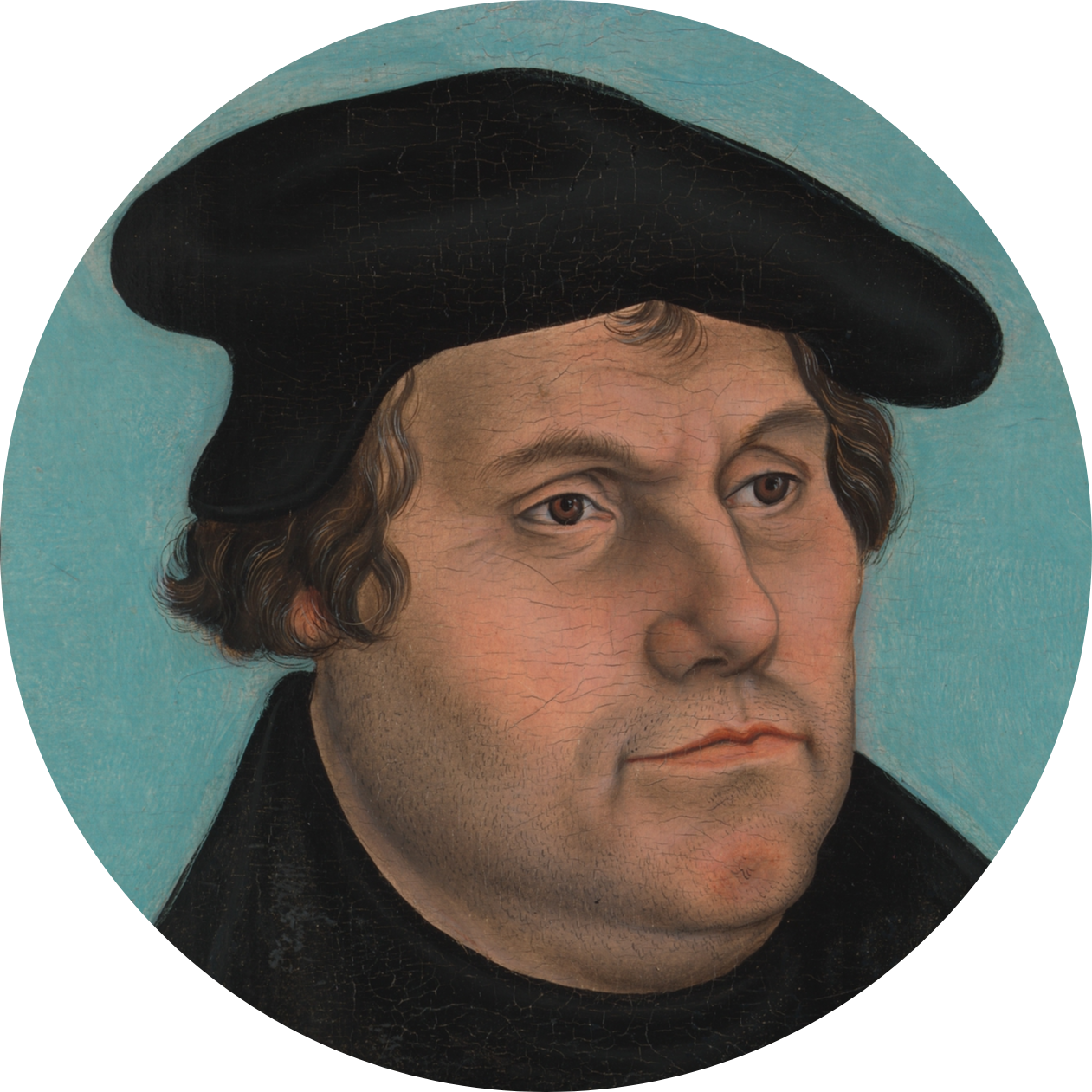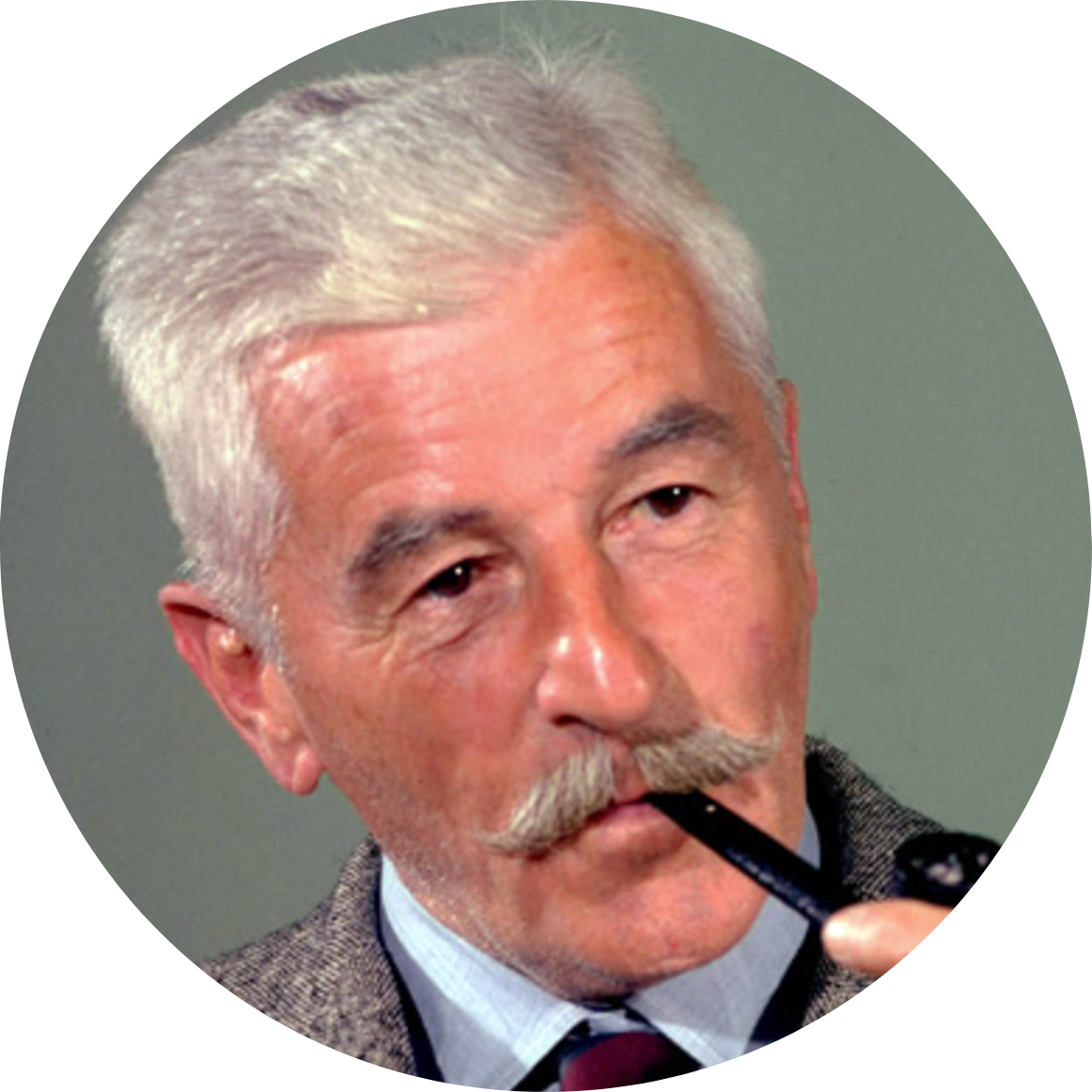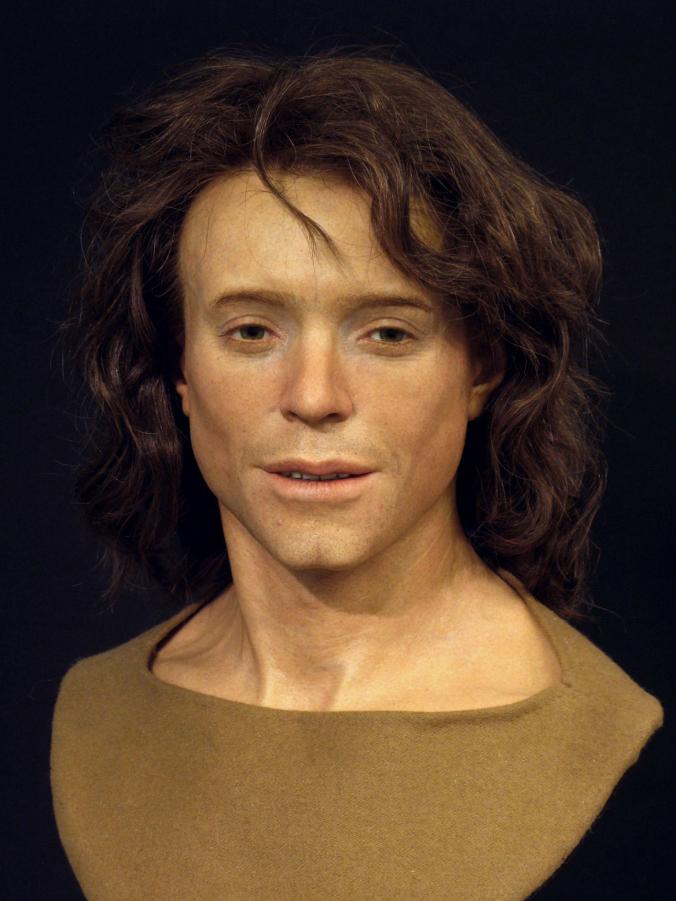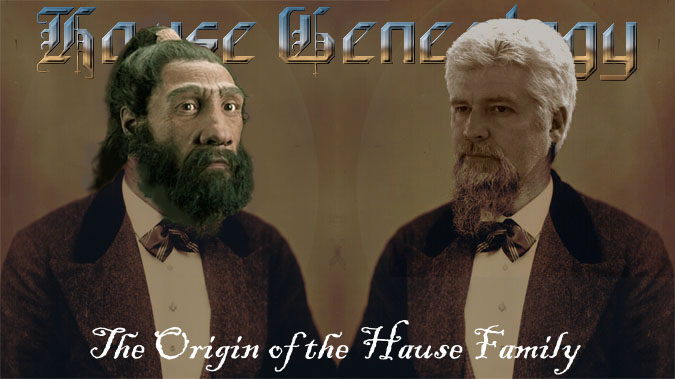 |
"If you do not know the names of things, the knowledge of them is lost, too."
—Carl Linnaeus (1707-1778), Swedish botanist, physician, and zoologist who formalized binomial nomenclature, the modern system of naming organisms.
|
Until recently, the only way to trace a person's ancestry beyond their family's paper trail was to follow a surname—such as Hause—back through the generations. The researcher would track a line of names and their variants that would hopefully lead to a single source; for instance, the modern last name Johnston was derived from the surname Johnson (because its spelling was mangled by a census taker), which a few hundred years earlier was a simplified version of John's Son, who obviously (hopefully) came from (you guessed it) John. Unfortunately, surnames like Hause have so many variants that it's easy to get lost: It could've been derived from the British surname Hawes, or the French/Norman Hauss, or the Dutch Haas, or the German Hauß, or... you get the picture. In cases of adoption, bastardy, alias, government order, or even bad spelling, the trail becomes even more impossible to follow. Without written records, language, or even names, the identities of our earliest ancestors have obviously been lost to time. Modern Homo sapiens has been alive for about 200,000 years, but it would be tens of thousands of years before recognizable languages were invented, 190,000 years before our ancestors truly became 'modern man'... and 199,500 years before one of them would be named "Hause" (and probably mispronounced for the first time seconds later).
But with the discoveries of the gene and the chromosome in the 19th Century, then the helical structure of DNA in 1953, and then the creation of genetic fingerprinting in 1984, we now have the ability to compile a richer, deeper family history. Instead of only following the Hause surname for a few hundred years, we can now follow the Y-DNA sequence in our genes (a "haplogroup") for hundreds of thousands of years, to the very inception of the human race.
As long as males and females have produced children, our Y-DNA has been handed down from father to son, almost like a biological version of a surname—but in biology there is no census taker to mangle the spelling. Instead, the Y-DNA haplogroup develops variants (mutations) when parts of the genetic chain get dropped or resequenced as it is passed on to the next generation. By comparing the sequence of one line of Y-DNA to the those of other men from different times and places, science can pinpoint and track a series of mutations to figure out when and where the DNA first came from and when it changed... and even who it came from.
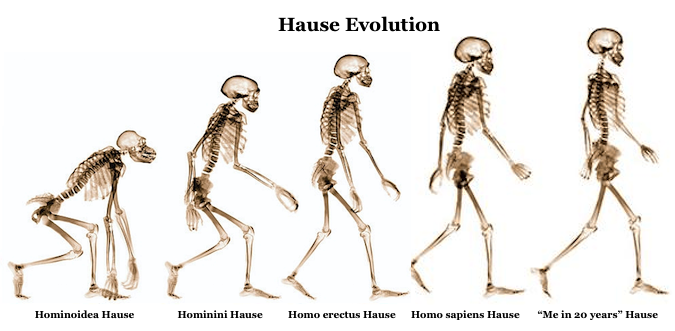 |
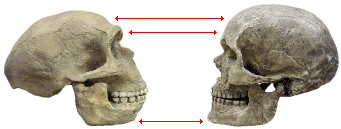
|
But first, let's go all the way back, two to three million years ago, when our ancestors transitioned out of the trees ('branching out,' in a perfect genealogical metaphor) and began living on the savannah. As a result, human physiology started to evolve over thousands of years in order to fit their new lifestyle: By chance, a broken gene (a gene unable to make working proteins because of a random change to the DNA sequence) called CMP-Neu5Ac Hydroxylase in our ancestor created a mutation—but instead of debilitating our forefathers, it actually improved their capacity for oxygen utilization. As a result, our ancestors grew longer legs, bigger feet, large gluteal muscles, and developed better sweat glands—giving them powerful legs for walking with an improved cooling system. Our ancestors were able to use these advances to become apex predators, adopting a new hunting pattern known as persistence hunting: they would go out in the heat of the day, while other carnivores were resting, to chase their prey until it was too hot and exhausted to run anymore. (Before you think our ancestors were too lucky, the broken CMAH gene also increased the risk of cancer and type-2 diabetes.)
The Smithsonian National Museum of Natural History lists 21 species of human who lived on Earth at some time in our evolutionary history (as of 2023). By 300,000 years ago there were still at least ten species of humans: Homo sapiens (us), Homo rhodesiensis (until 274,000 years ago), Homo naledi (until 236,000 years ago), Homo luzonensis (until 134,000 years ago), Homo erectus (until 108,000 years ago), Homo juluensis (until 50,000 years ago), Homo floresiensis (until 50,000 years ago), Neanderthals (until 40,000 years ago), Denisovans (until 25,000 years ago), MAGA's (just kidding), and the Red Deer Cave people (until 11,500 years ago), all inhabiting different corners of the globe at the same time, if you want to pretend that a globe has corners.
|
In biology and genealogy, the most recent common ancestor (MRCA) of any set of organisms is the most recent individual from which all the organisms are directly descended. The MRCA of our species, Homo sapiens, lived sometime after "Mitochondrial Eve" (mt-MRCA) and "Y-chromosomal Adam" (Y-MRCA) around 236,000 years ago—probably in East Africa. By 115,000 years ago, early modern humans had expanded their range to South Africa, and then migrated into Southwest Asia (Israel) about 100,000 years ago. By examining other bottlenecks most Eurasian men such as the Hauses are descended from a man who lived in Africa 69,000 years ago (Haplogroup_CT).
By that time, our species of Homo sapiens (also called Cro-Magnon, named after the site of first discovery in France¹) had become the dominant predator on Earth, with cranial capacities up to 1590 cm—which is relatively large, even compared to people today (especially people who work in show business). They shared the planet with at least four other species of early humans: Homo erectus, Homo neanderthalensis, Homo floresiensis (the 3-foot "Hobbit people" who inhabited the island of Flores in Indonesia), and a fourth species discovered in 2016, called Homo sapiens denisova (the "Denisovans"), who were related to Neanderthals. Another mutation in a gene called TKTL1 caused the brains of Homo sapiens to produce extra neurons in the frontal lobe, allowing for more complex thoughts, beyond the capabilities of the other, rival species. (Researchers have uncovered another 96 mutations occurring over several hundred thousand years giving humans the evolutionary edge their rivals.)
The Homo sapien men all belonged to one of five Y-chromosome DNA haplogroups: BT, CT, C, F—or in the case of of the ancestor of the Hause family—IJ. The average height of Homo sapiens men at that time ranged between 179 and 194 cm—taller than the other Homo species. They were characterized by a well-built body, a strong jaw bone, big hands, dark skin and blue eyes. (Basically, everything I'm not, 75,000 years later.) They spoke with nasal pronunciation, characterized by melodic accentuation, and a specific sentence intonation. These tall, well-built, melodic smooth-talkers (am I really descended from these people?) got along swimmingly in the genetic soup with the other species—sometimes too well: Suave Homo sapien hunter/gatherers, always on the look-out for prey and a good time, followed migrating game into Europe—and while on this exotic hunting trip, hooked up with the local, physically robust but less articulate Homo neanderthalensis women. ("What happens in Lascaux stays in Lascaux, right?") Soon there were children—and probably rushed, sling-shot weddings; there's also evidence that Homo sapiens interbred with Homo erectus, the "upright walking" human, Homo habilis, the "tool-using" human, and possibly others. (I have to stop here; in this context every one of these names becomes a double-entendre.)
Nature eventually stepped in to stop this multi-species key party about 74,000 years ago, when modern humans almost became extinct. Extreme climate change from ice ages and volcanic activity such as the Toba super eruption may have reduced the Homo sapien population to about 10,000 adults of reproductive age. The other human species dwindled even further, unable to adapt to the environmental changes. By 70,000 years ago, Homo erectus was completely extinct, while Homo sapiens was able to adapt and migrate into warmer areas. 50,000 years ago, Homo sapiens arrived on the island of Flores, decimating (and possibly eating) the cute little Homo floresiensis population. Then 28,000 years ago, Homo neanderthalensis died out, as well—the pathogens transmitted to them through contact with good-timing Homo sapiens (such as tuberculosis, tapeworms, stomach ulcers, and two different kinds of herpes) probably didn't help their cause; This finally left Homo sapiens as the sole survivor of the once diverse human family tree known as the genus Homo, with no rivals remaining; he was literally the last man standing, a has therefore now been given the decisive scientific monicker of a "European Early Modern Human" (EEMH)... with only himself left to go to war with.
While all of his hunting competition was dying out, the population numbers of Homo sapiens bounced back. Natural selection ensured that only the best and the brightest survived, and modern man and the culture he created progressed rapidly; he adapted to the changing landscape, then found better hunting grounds with a liveable climate, developed more sophisticated communication, and invented advanced tools made of bone and antler to make daily life easier.
It was during the Upper Paleolithic period, which dates back 50,000 to 12,000 years, that humans began engaging in "modern behavior," meaning that they established organized settlements, art, fishing, and complex social networks. Humans began to rely on each other in order to survive: caring for infants, and sharing food and tools with one another thus becoming less isolated and more interconnected. Our ancestors then invented cars with no floorboard, propelling the vehicle with his feet (no wait, that was The Flinstones)... but he did invent the boat, sailing all over the world to new continents. He became self-aware, creating music, art, and religion. (When climbing into a boat and sail out past the horizon with no idea if you'll ever find land, it was probably easy to find religion.)
Our Hause ancestors can be traced back to Western Europe through their original Y-DNA haplogroup. We can follow their migration across the continent through the mutations that their Y-DNA picked up as it was passed from father-to-son, long before our ancestors were known as Hauses.
 Map showing human migration out of Africa (click to enlarge). |
Our oldest traceable Homo sapiens ancestor (since he's our paternal ancestor, we'll call him Cro-Magnon-Hause IJ), lived 45,000 years ago.¹ Escaping the colder climate, he followed migrating herds of game into warmer, fertile areas with new sources of food (and a wider variety of females to procreate with along the way).
Cro-Magnon-Hause IJ's exact region of origin cannot be determined since Paleolithic humans were nomadic hunter-gatherers, but his male descendents, adapting to a new environment (or maybe their gonads were freezing from the ice age), mutated into Haplogroup "I," which probably first appeared in Europe about 43,000 years ago.² (We know this because the DNA of the haplogroup has been found in Palaeolithic sites throughout Europe, but not outside of Europe.) Cro-Magnon-Hause I was the first of his kind; the progenitor of a Y-chromosome clade. (A clade represents all the branches—and thus descendants—of a taxonomic (or ancestral) tree that share a single common ancestor.) Our Haplogroup has been found in multiple individuals belonging to the Gravettian period, which spanned roughly from 27,000 to 20,000 BC. They are associated with a genetic cluster at an Upper Paleolithic archaeological site near the village of Dolní Věstonice in the South Moravian Region of the Czech Republic, on the base of Dĕvín Mountain. The Gravettian culture is known for Venus figurines, which were typically carved from either ivory or limestone. The Gravettians expanded westwards from the far corner of Eastern Europe, likely Russia, to Central Europe.
Cro-Magnon-Hause I entered Europe through the Balkans and became a "West European Hunter-Gatherer" (WHG). He was migrating with elk, wooly mammoths and hairy Siberian unicorn rhinos, and competing with saber-toothed cats for food. His decendants then spread throughout the region. Cro-Magnon-Hause I didn't sail to places like Australia with the other guys; he remained in Europe; maybe he stayed in caves all by himself—over-sensitive and alienated, painting his grafitti on the wall (Cro-Magnon-Hause I longed to leave a permanent mark); maybe he sculpted curvaceous, big-breasted stone Venus figurines and hid them under his animal skin bed before his mom came home to the cave. Cro-Magnon-Hause I was a new breed—he had no way of knowing that his genetic markers had mutated... he looked and acted just like his brothers and sisters—he just knew he was different.
Cro-Magnon-Hause I eventually found the right girl and started a family, and his descendants would reside in Western Europe for the next 20,000 years.
|
About 22,200 years ago, the Hause Y-DNA mutated again into subgroup I-M170, at the time of the Last Glacial Maximum (LGM), when ice sheets were at their greatest extension. (The oldest member of the I-M170 mutation ever found is that of an individual known as Krems WA3, dating from circa 33,000-24,000 BP in lower Austria.) Cro-Magnon-Hause I-M170 and his descendants hunted and gathered across Western Europe, eventually settling in the area between France and Germany along the Rhine River, called northern Gaul, during the Bronze Age and into the Iron Age (long before they were called Hauses). The line remained this way for several thousand years before mutating into subclade (a subgroup of a Haplogroup) I-P214 in about 16,000 BCE (with a 95% probability of being born between 18,457 and 13,672 BCE). Then the line was stable genetically for another thousand years.
The next mutation in our chain, subclade I2a1b1 (also known by its shorthand name, I-M223, also expressed as I2-M223, previously as I2a2; this stuff changes fast⁵), then appeared in our ancestry. The first of our paternal ancestors to be I-M223 (let's call him Proto-Hause since everyone who is I-M223 descends from him) probably lived about 14,000 to 18,000 years ago, near what is now called northern France.
Proto-Hause's father was not in Haplogroup I-M223, nor were any of his brothers. They were all in Haplogroup I-P214, just like their forefathers and all their male cousins. Proto-Hause I-M223 was "special." A sperm from his father had a Y-chromosome that mutated, and when it fertilized his mother's egg, the I-M223 "family" was created—before there were Germans, or Britons, or even Hause's—and his descendants founded new lines that were different than everyone else on Earth.⁶
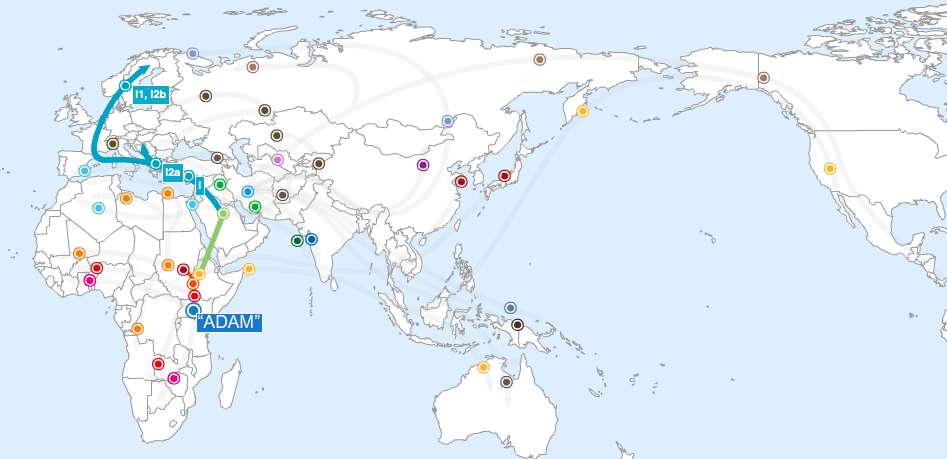 Map showing the migration route of our paternal ancestors, from the time of "Adam" up through the last ice age, about 11,700 years ago. Proto-Hause's descendants helped repopulate the depleted human race after the last ice age, spreading into Western Europe and Scandinavia. |
Human existence wasn't only evolving genetically, though. For millions of years all humans, early and modern alike, had to find their food. They spent a large part of each day gathering plants and hunting or scavenging animals. Then at the end of the last ice age, between 10-12,000 years ago, Homo sapiens made the transition from hunting and scavenging food to producing it. Modern humans found they could control the growth and breeding of certain plants and animals, which led to farming and herding animals, activities that transformed Earth's natural landscapes—first locally, then globally. As humans invested more time in producing food, they settled down. Villages became towns, and towns became cities. With more food available, the human population began to increase dramatically. The rate of evolution also accelerated, because more people procreating meant there were more mutations.
Meanwhile, proud, iconoclastic, sad-eyed Proto-Hause could never settle down and kept hunting and gathering, searching farther and farther afield for good hunting grounds. This particular ancestor, Proto-Hause I-Z161, lived around 8200 BCE (10,000 years ago) and his other descendants include General George Armstrong Custer (1939-1876). His cousins with an "I2" haplogroup stayed on the farm, grew fat and contented, developing white skin and blonde hair about 8,000 years ago around what is now Sweden, and became Continental Europe's largest paternal lineage from the Mesolithic era. (Proto-Hause I-Z161's clan did okay, too, because as they traveled through these new towns and farmlands on their hunts, they met a lot of I2 farmers' daughters and had a few kids of their own.
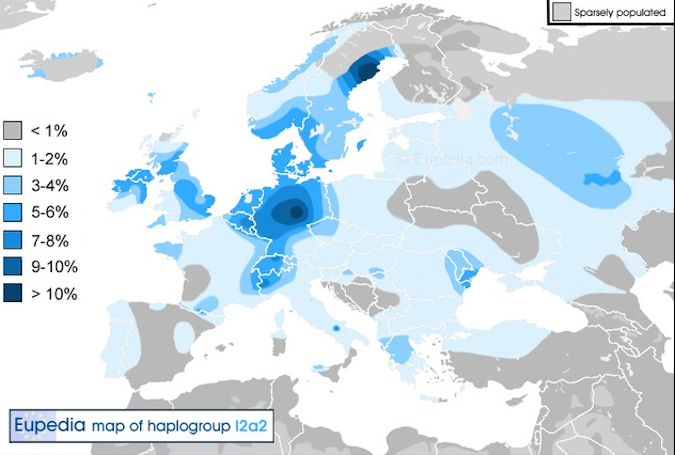 Map showing the concentration of the I2a2 (I2a1b1 or I-M223) haplogroup in modern Europe, centering mainly in Germany. |
|
|
Then, about 3,500 years ago, our line of this hapologroup mutated once again—into a new sub-branch, called I-Y5282. Unlike other mutating strands that extended into Germany or England, our line stayed close to home, forming a Celtic tribe in the area known as "Gaul," which encompassed an area of 191,000 square miles (494,000 km).
Our Celtic Hause ancestors were then part of a I-Y11229 subclade that formed somewhere around 2-3000 years ago on the coastal plains between France and northern Germany, and became part of a large Gallic-Germanic confederation of Celtic tribes called the Belgae (Latin for "Belgians"), living between the English Channel, the west bank of the Rhine, and northern bank of the river Seine, from at least the third century BC. The ethnic name Belgae comes from the Proto-Celtic root *belg- or *bolg- meaning "to swell with anger", derived from the Proto-Indo-European root *bhelgh- ("to swell, bulge, billow"). Thus, a Proto-Celtic ethnic name *Bolgí could be interpreted as "the people who swell with anger." (This explains a lot about my family.)
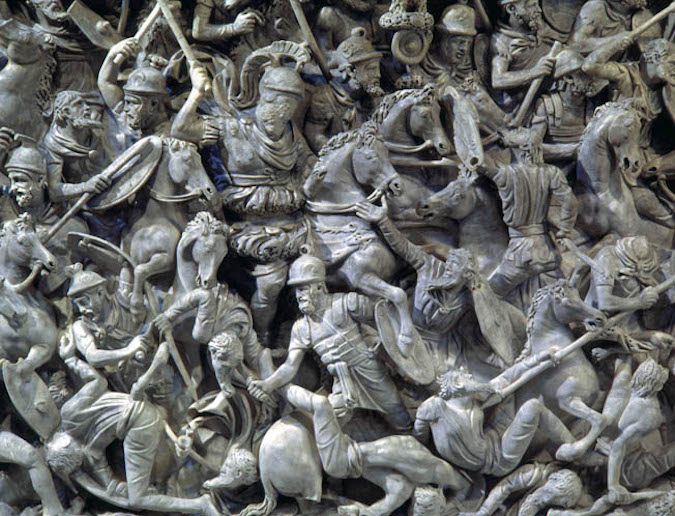 Roman depiction of the war in northern Gaul. |
|
Roman forces under Gaius Julius Cæsar conquered the area in the Gallic Wars of 58-51 BC. As many as a million Gauls (probably 1-in-5 of the population) died in the onslaught, while another million were enslaved; 300 clans were subjugated, and 800 cities were destroyed as Rome expanded its border to the Rhine River. After defeating the resistance by King Ambiorix and subjugating the rest of the region, Cæsar combined the three territories of Gaul—Belgae, Celtae, and Aquitani—into a single province, called Gallia Comata ("long-haired Gaul").
Where our ancestors moved next is open to debate. Gauls with the Hause family's Y-DNA subgroup dispersed into north-eastern Sweden, to France, and the British Isles (especially in Scotland and Ireland). Others integrated themselves into the Roman Empire and contributed to the Gallo-Roman culture that emerged in Gallia (as the Romans called it).
Meanwhile, the Julian calendar, a 45 BC reform of the Roman calendar, was instituted by Rome in AD 1, the poem Metamorphoses was being written by Ovid, and Jesus Christ was beginning his ministry in Israel.
|
|
|
Population decline, the collapse of centralized authority, invasions, and mass migrations of tribes, which had begun in Late Antiquity, continued in the Early Middle Ages. But, you may still be asking, are we descended from royalty? The good news is, yes, we are probably descended from Charlemagne (Charles I), Carolingian King of the Franks and Holy Roman Emperor (2 April 748 - 28 January 814), who united Europe during the Early Middle Ages.⁷
Between wars and plagues, the descendants of I-FT149504 started to search for better lives elsewhere and dispersed all over the world; but we can observe their aggregates in many regions, from north-eastern Sweden to France in the west and the British Isles, especially in Scotland and Ireland. In Book 5, Chapter 12 of his Comentarii de Bello Gallico, Julius Cæsar wrote that the southeastern British tribes were ruled by descendants of the Belgae. Furthermore, Belgic tribal names, such as the Atrebates, were also found in Britain. One tribe, the Menapii, were recorded in Ireland by 2ndC CE by Greco-Egyptian geographer Ptolemy.
The large-scale movements of the Migration Period, including various Germanic peoples, formed new kingdoms in what remained of the Western Roman Empire. Most kingdoms incorporated the few extant Roman institutions. The Franks, under the Carolingian dynasty, briefly established the Carolingian Empire during the later 8th and early 9th century. It covered much of Western Europe but later succumbed to Vikings from the north, Magyars from the east, and Saracens from the south. Some family historians say that our Hause ancestors migrated to the British Isles at this time, while others say they remained in the area that is now Germany during the Middle (or "Dark") Ages.
|
During the High Middle Ages, which began after 1000, the population of Europe increased greatly as technological and agricultural innovations allowed trade to flourish and the Medieval Warm Period climate change allowed crop yields to increase. The human race was now growing and moving so rapidly that people like our Hause ancestors began to need a better way to identify and differentiate themselves—specifically, who and where they came from, and what they did—to and from other people (conversely, as travel became easier and populations spread around the world, haplogroups would become less useful in determining where a person was from). At the time, most people in Europe had only one name (in fact this is still true in some scattered areas). As infant baptism was an integral part of church rites, the common practice was that the baby would take the given name of its sponsor at the christening—which resulted in a very limited number of names being used. For instance, six or seven names for either sex would have covered 90% of the population of Germania—Margaretha, Elisabetha, Juliana, Katharina, Susanna, Dorothea, Konrad, Georg, Jakob, Philipp, Adam, and Johannes. Sometimes the name was preceded by a courtesy saint's name, which had to be Johann for boys and could be Anna or Maria for girls.
Soon tracking down a particular "John" (or "Johann") in a densely-populated village became a nightmare. As the population began to grow in ever-expanding towns and cities, there needed to be a way to differentiate between all of the Johns, Williams and Roberts living in the same area. You couldn't ask what a person's haplogroup was; there needed to be a simple way to set people apart.
To overcome this problem, the use of family names (or "surnames") came into vogue in the 14th and 15th centuries. Each family's name evolved from definable characteristics of the head member. For instance, if the tallest William in town was called "William the long fellow," then ultimately he became "William Longfellow." It was also common to select a term indicating the person's location or occupation. So "John who lives by the apple orchard," eventually became "John Appleby" (which eventually became a very mediocre restaurant chain, but that's another story).
Eventually, these lines developed surnames in order to tell the different families apart.⁸ One line became what we now spell as "H-a-u-s-e" (unless you work at Starbucks, then good luck spelling anything close to that). Another line apparently moved to the British Isles and became "Bennett," because I get a lot of 12-marker Y-DNA matches with men of that name, so there's a 99% chance of a common ancestor about 24 generations back. Our ancestor was not just a Proto-Hause and a Proto-Bennett; He was also a Proto-Braun (German), and a Proto-LeForte (French), and a thousand other names. (Proto-Hause got around.⁹)
Despite societal and cultural advances, our ancestors didn't exactly have it easy during the Late Middle Ages. The period was marked by more famine and war, which significantly diminished the population of Europe. Then between 1345-1400 AD, "The Plague" (which at this point was reoccurring so often as to have its own familiar nick-name), struck again and killed at least a third of the population in Europe.
So, where did the newly-named Hause family escape from these catastrophes? Our earliest known family history states that the Hause family was from Germany, but were cousins to Queen Mary, so even after all of the discoveries listed above, we're right back to the original argument: We're either German or British. (Maybe further genetic testing by more Hause descendants will clear this up.) Wherever our Hause ancestors lived, they had outlasted Roman rule and survived the Middle Ages; they had escaped wars, plagues, droughts and purges in the process. Then they sailed across the Atlantic Ocean at the turn of the 18th Century, ending up in the British Colonies of New York. Conditions there were harsh, as cold winters, starvation, and disease made life difficult—but still much better than it was where they came from. (Although nature still keeps trying to finish us off. In 1918-1919, Influenza killed up to 40 million people worldwide, about 5% of the entire human population. When nature couldn't do it, we tried mass genocide, world wars, and now we're killing our climate. I'll bet nature can't wait to get rid of us.) Anyway, we descend from some tough people.
Whatever the last name, we're all just struggling to figure out who we are and where we came from. This is my particular journey. I hope you're enjoying yours... and if you're a Hause, I hope that your spouse isn't named "Bennett" or "Flohrmann."
So, two-to-three million years of evolution in our line serves as prologue, and leads us all the way to our first chapter... in which we throw out all the facts, and start with a legend...
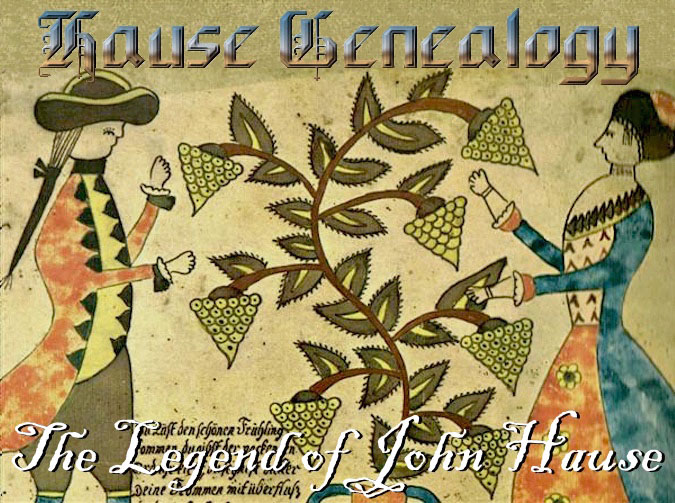 |
CHAPTER ONE: THE LEGEND OF JOHN HAUSE,
1690 - 1721. "The first John Hause was born in Germany in the year 1690, and when an infant, on account of Religious Persecutions, he was transported by his 'cousin', Queen Mary II, of Great Britain, House of Stuart, Daughter of James II and Anne Hyde, born 1662, married William, Prince of Orange at the age of 17, reigning 15 years, and died in 1694 of Small Pox, leaving no children. A kind, meek, and noble Queen."

A history of the author's line of the Hause/Hawes family, including (briefly) the first 3 million years:
PROLOGUE: THE ORIGIN OF THE HAUSE FAMILY
CHAPTER 1: THE LEGEND OF JOHN HAUSE (1690-?)
CHAPTER 2: JOHN HAUSE OF WARWICK (1719-1794)
CHAPTER 3: WILLIAM HAUSE (1750-1818)
CHAPTER 4: JOHN HAUSE OF FAYETTE (1773-1844)
CHAPTER 5: AUGUSTUS HAUSE (1804-1875)
CHAPTER 6: LABAN AUGUSTUS HAUSE (1831-1906)
CHAPTER 7: FRANK AUGUSTUS HAUSE (1867-1951)
CHAPTER 8: TWENTIETH CENTURY MICHIGAN
CHAPTER 9: CARLISLE HAUSE (1891-1972)
CHAPTER 10: THE GREAT DEPRESSION
CHAPTER 11: CARLETON MARCHANT HAUSE, SR. (1917-1983)
CHAPTER 12: CARLETON MARCHANT HAUSE, JR. (1939-2014)
AFTERWARD: THE TWENTY-FIRST CENTURY

Content outside of the chronological chapter narrative:
APPENDIX #1: HAUSE FAMILY TIMELINE, 1690-PRESENT
APPENDIX #2: WILLIAM HAUSE GENEALOGY, 1750-PRESENT
APPENDIX #3: THE HAUSE FAMILY IN THE CIVIL WAR
APPENDIX #4: HAUSE FAMILY BIBLES

A compendium of stuff that doesn't fit anywhere else, from science to Soundex to source material to similar surnames to some guy who wrote bad jokes for a living:
ADDENDUM #1: THE HAUß FAMILY OF THE MOHAWK
ADDENDUM #2: THE HAAS FAMILY OF SAARLAND
ADDENDUM #3: MORE HAUSE / HAWES LINES
ADDENDUM #4: DNA TESTING
ADDENDUM #5: LINKS TO OTHER WEBSITES
ADDENDUM #6: ABOUT THE AUTHOR
NOTES ON THIS PAGE:
¹—The original Cro-Magnon find was discovered in a rock shelter at Les Eyzies, Dordogne, France. The type specimen from the site is Cro-Magnon 1, a male, carbon dated to about 28,000 14C years old. Compared to Neanderthals, the skeletons showed the same high forehead, upright posture and slender (gracile) skeleton as modern humans. The other specimens from the site are a female, Cro-Magnon 2, and another male, Cro-Magnon 3. The condition and placement of the remains of Cro-Magnon 1, along with pieces of shell and animal teeth in what appear to have been pendants or necklaces, raises the question of whether they were buried intentionally. If Cro-Magnons buried their dead intentionally, it suggests they had a knowledge of ritual, by burying their dead with necklaces and tools, or an idea of disease and that the bodies needed to be contained. Analysis of the pathology of the skeletons shows that the humans of this period led a physically difficult life. In addition to infection, several of the individuals found at the shelter had fused vertebrae in their necks, indicating traumatic injury; the adult female found at the shelter had survived for some time with a skull fracture. As these injuries would be life-threatening even today, this suggests that Cro-Magnons relied on community support and took care of each other's injuries. The Abri of Cro-Magnon is part of the UNESCO World Heritage of the "Prehistoric Sites and Decorated Caves of the Vézère Valley."
²—We Hauses are as European as human beings can possibly get: Our Y-DNA Haplogroup I is the oldest major haplogroup in Europe and in all probability the only one that originated there (apart from very minor haplogroups like C6 and deep subclades of other haplogroups). It is thought to have arrived from the Middle East as haplogroup IJ sometime between 45,000 and 50,000 years ago, and developed into haplogroup I approximately 40,000 years ago. Human remains from Paglicci Cave, near Rignano Garganico, Apulia, southern Italy, have been found to belong to pre-I (i.e., it exhibits the derived state for some SNPs that distinguish haplogroup I from haplogroup J, but it exhibits the ancestral state for other SNPs that distinguish all known extant members of haplogroup I from haplogroup J).
Haplogroup I represents one of two major European Y chromosome haplogroups (the other major haplogroup is Y Haplogroup R). Unlike R, clade I is widespread in Europe and is virtually absent elsewhere. Subclade Haplogroup I1 is found mostly in Northern Europe, while subclade Haplogroup I2 is the most frequent haplogroup in Eastern Europe and the Balkans (source: SNPedia). The identification of the 'Western Hunter-Gatherer' component in modern populations is based on the analysis of the genome of a Mesolithic hunter-gatherer buried c. 8000 years ago in the Loschbour rock shelter in Müllerthal, near Heffingen, Luxembourg.
The I-M170 haplogroup is one of the most common among European males. Subclades (such as I2 and I-M223) can be found in most present-day European populations, with peaks in some Northern European and South East European countries. Consequently, I-M170 represents up to one-fifth of the male population of Europe, being the continent's second major Y-DNA haplogroup (behind Haplogroup R). The haplogroup I-M170 reached its maximum frequency in the Balkans (with the highest concentration in present-day Herzegovina). It may be associated with unusually tall males, since those in the Dinaric Alps have been reported to be the tallest in the world, with an average male height of the range 180 cm (5 ft 11 in) - 182 cm (6 ft 0 in) in the cantons of Bosnia, to 182 cm (6 ft 0 in) - 186 cm (6 ft 1 in) in the cantons of Herzegovina.
Haplogroup I2a1b1 (L69.2(=T)/S163.2) was known as I2a2 until recently (S33/M436/P214, P216/S30, P217/S23, P218/S32, L35/S150, L37/S153, L181), as I1c until 2005 and I2b until 2010. It is associated with the pre-Celto-Germanic people of northwestern Europe, such as the megalith builders (5000-1200 BCE). Its age has been estimated between 21,000 and 13,000 years old, which corresponds to the Epipaleolithic period. I2a2 is found in most of Europe and could have had a continent-wide distribution before the arrival of Neolithic farmers. Although it hasn't been identified in the few Mesolithic Y-DNA samples available as of 2016, I2a2a was found in Neolithic Spain and in southern Russia during the Yamna culture, at each extremity of Europe, while I2a2b has been found in central Germany since the Early Bronze Age. This very ancient dispersal and its relatively low modern frequency makes it very difficult to assess what happened to each branch before the Late Bronze Age or the Iron Age.
³—A study done on two populations of neolithic skeletons (15,000 - 12,000 YBP ["Years Before Present"] and 12,000 - 8,000 YBP) lists life expectancy at birth as about 25, and the adult mean age at death as 32. The ratio between adult mean age at death for females and males was swapped between the two cultures, which is a little odd. In any case, the two had the same mean (Hershkowitz and Gopher 2008:445).
⁴—Hunter-gatherer European had blue eyes and dark skin, by Rebecca Morelle, Science reporter, BBC World Service; 27 January 2014. "Scientists were able to extract DNA from a tooth of one of the ancient men and sequence his genome. The team found that the early European was most closely genetically related to people in Sweden and Finland. But while his eyes were blue, his genes reveal that his hair was black or brown and his skin was dark."
⁵—The name of the Hause family's haplogroup is I-M223 (also expressed as I2-M223) in shorthand, and I2a1b1 in longhand, and its Haplogroup I parent is still I-M170. But now the Hause family has been placed in a sub-branch of M223, called I-CTS1977, shown in longhand as I2a1b1a2b1a1, which was named in June of 2018. The reason for the change was that as more and more SNP sub-branches have been discovered and named, the ISOGG (International Society of Genetic Genealogy) needed to rename the longhand alpha-numerical form of the branches of Haplogroup I, in order to accommodate all of the new sub-branches.
Way back in the olden days of genetic science (about 2002-2005), there were just these branches of Haplogroup I:
|
By 2006, when the ISOGG started setting out the "Y-Tree," the I-M223 branch was renamed, with four sub-branches:
|
In 2008, there was another renaming of the branches in Haplogroup I. The I-M223 branch was then named I2b1 with the same four sub-branches:
|
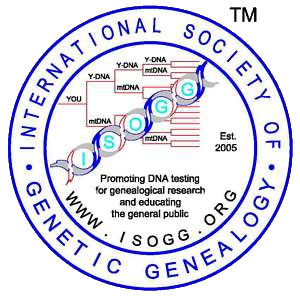 |
The longhand names changed again 2011: I-M223 became I2a2a, but the testing companies were slow to take up the new names, especially 23andMe. FTDNA tried to use their own naming system, but then changed to the shorthand form, so they wouldn't have to update the name as the tree grew.
In June 2018, Haplogroup I had another restructuring to accommodate more new branches and the I-M223 branch was renamed I2a1b1.
You can see the new Haplogroup I tree and scroll down to I2a1b1 at: https://docs.google.com/spreadsheets/d/1WkRe8UxrhMZ-CaYtPET5rIBbzqCNkGER4YJurbG2ESQ/edit#gid=198726360. (Copyright 2018, International Society of Genetic Genealogy)
Once the Haplogroup Tree is determined, then the Y DNA of one person can be differentiated from the other people in the haplogroup by testing for two different kinds of mutations: STR (short tandem repeat) markers and SNPs (single nucleotide polymorphisms.) All DNA is comprised of four different nucleotides, abbreviated by A, C, G and T.
- A=adenine
- C=cytosine
- G=guanine
- T=thymine
When mutations take place, they can take the form of three different types:
- A deletion occurs when a nucleotide, or multiple nucleotides, fail to copy during reproduction. Therefore, that location or locations are then blank, with no DNA at that location permanently.
- A replacement occurs when a nucleotide is replaced or swapped out with a different nucleotide. For example, an A could be replaced with one of the other nucleotides, and so forth.
- An insertion occurs when a nucleotide or a group of nucleotides is duplicated and inserted between existing nucleotides.
At the I-M223 branch node there are currently (2020) at least 72 SNPs which the members all share. These mutations occurred at various locations on the Y-chromosome between 18,900 and 15,300 years ago. The last common ancestor of everyone in Haplogroup I-M223/I2a1b1 lived between 13,100 and 10,700 years ago. Over the generations since then, SNP mutations have continued to occur right down to the present. Therefore, to uncover the pathway of a particular line from the I-M223 founder to the present, there needs to be SNP mutation testing.
If mutations never occurred, the Y DNA of all males would be identical and therefore not useful for us in genealogy, or to peer back in time beyond the advent of surnames.
Mutations do occur, just not on any schedule. This means that it's difficult to predict how long ago we shared a common ancestor with someone else based solely on Y DNA mutations—although some types of mutations are better predictors than others. STR markers represent other mutations on the Y-chromosome, but unlike most SNP mutations, these can change more frequently than others, and within the same paternal line.
A mutation might occur between a male and his father, or there might be no mutations for hundreds or even, potentially, thousands of years—depending on the marker type. Every Hause in our line is a descendant of a man whom we now call, according to the SNP marker, "I-M223." He lived about 19,000 years ago. Through SNP mutations, we next can trace this line to our common ancestor, "I-Y5282," who lived about 3,500 years ago. About 2,900 years ago our line separated again, into what is now called I-Y11230 (or its equivalent, I-11919). A phylogenetic ancestral Tree can be seen here. Over the centuries, more mutations have occurred. Our paternal ancestors mutated into I-Y11229 (2-3000 years ago), and more recently, into what we are now: the newly-designated I-FT149504. (This happened before the advent of surnames, as the only other person who tested positive for this haplogroup—so far, anyway—is named "Peters" (descended from a George Peters, born abt. 1855 in the US), and not "Hause," so our ancestors were either brothers hundreds of years ago who went off to start new family lines—or somebody was adopted along the way. This is the point where surnames fail and the only way to find a common paternal ancestor is through genetics.)
⁶—And definitely different than Edmond Hawes's (I-M253) and Johann Christian Hauß's (R-M269). Here's our Haplogroup Tree, based ion the latest (2022) findings: A-PR2921 (232,000 BCE) > A-L1090 (150,000 BCE) > A-V168 (124,000 BCE) > A-V221 (120,000 BCE) > BT-M42 (85,000 BCE) > CT-M168 (63,000 BCE) > CF-P143 (62,000 BCE) > F-M89 (46,000 BCE) > GHIJK-F1329 (46,000 BCE) > HIJK-PF3494 (45,000 BCE) > IJK-L15 (44,000 BCE) > IJ-P124 (39,000 BCE) > I-L758 (34,000 BCE) > I-M170 (25,000 BCE) > I-P215 (22,000 BCE) > I-CTS2257 (20,000 BCE) > I-L460 (20,000 BCE) > I-P214 (16,000 BCE) > I-M223 (15,000 BCE) > I-P222 (10,000 BCE) > I-CTS616 (9900 BCE) > I-CTS10057 (8500 BCE) > I-Z161 (8200 BCE) > I-CTS4348 (8000 BCE) > I-L801 (6700 BCE) > I-Z178 (3200 BCE) > I-Z165 (2400 BCE) > I-CTS1977 (1700 BCE) > I-Y4946 (1600 BCE) > I-Y5282 (1200 BCE) > I-Y11919 (1000 BCE) > I-M2379 (750 BCE) > I-S8522 (450 BCE) > I-FT148978 (300 BCE).
⁷—The bad news: So is everybody else of European ancestry. Charlemagne got around. He sired at least 18 children by eight of his 10 known wives and concubines, including King Charles the Younger (c. 772 - 4 December 811), Pepin the Hunchback (c. 769-811), King Carloman of Italy (April 773 - 8 July 810), Adalhaid (b. 774), Adaltrude (b. 774), Abbess Ruodhaid (b. 775), Rotrude (775 - 6 June 810), Drogo of Metz (801-855), Louis (778-840), Lothair (b. 778), Bertha (779-826), Gisela (779-826), Hildegarde (782-783), Abbess Theodrada (b. 784), Hitrude (b. 787), Archchancellor Hugh (802 - 844), Abbot Richbod (805 - 844), and Theodoric (b. 807). Among his descendants are several royal dynasties, including the Habsburgs, Capetians and Plantagenets. By consequence, most if not all established European noble (and from them, common) families can genealogically trace some of their background to Charlemagne. He isn't called the "Father of Europe" for nothing! (See National Geographic: "Charlemagne's DNA and Our Universal Royalty", by Carl Zimmer.)
⁸—A random sampling of surnames from I-M233 projects on the Internet: Dryer (German), Kazadzidis (Trapezuntine Greek), Pereira (Brazilian), Chumley (English), Bényi (Hungarian), Al Jaafari (Egyptian), Chitchyan (Armenian), González (Mexican), and Izzard (English, celebrity). So why doesn't Eddie Izzard look exactly like a Bényi or an Al Jaafari? It's because our general charateristics are determined by our autosomal DNA and not our mtDNA or Y DNA haplogroup. Two individuals can have identical mtDNA and Y DNA markings and look completely different as far as eye, hair and skin color, along with other physical attributes.
⁹—Since the father's father's father's ... father's line (purely patrilineal), is only a miniscule portion of a person's total ancestry (there are over a million ancestors to one person in just twenty generations, and if you consider 25 years per generation, then in 12,000 years there are 480 generations between a modern Hause and Proto-Hause), the likelihood that a modern Hause inherited any gene other than the original I-M233 from Proto-Hause is zero, and a Hause's overall relatedness to other I2a1b1 (I-M233) men would be no bigger than his relatedness to their general population. It is, in one way, very much like a surname—just a name... but it's still fun to think about!
SOURCES FOR THIS PAGE:
.jpg) Paleo-artist John Gurche at work (photo by Homo sapien Julie Prisloe). |
Paleo-artist John Gurche uses fossil specimens to create renderings of prehistoric creatures, and was a consultant for the movie Jurassic Park. Gurche created the Neanderthal bust, along with other lifelike head reconstructions of early humans, for the Hall of Human Origins in the Smithsonian National Museum of Natural History. It took Gurche 2½ years to complete the busts.
Gurche is currently an artist-in-residence at the Museum of the Earth in Ithaca, New York, near where my brother, Eric Hause, lives. To the best of my knowledge, Eric was not used as a model for any of the busts.
SOURCES FOR THIS PAGE |
|
|
|
|
|
|
|
|
|
|
|
|
|
|
|
|
|
|


